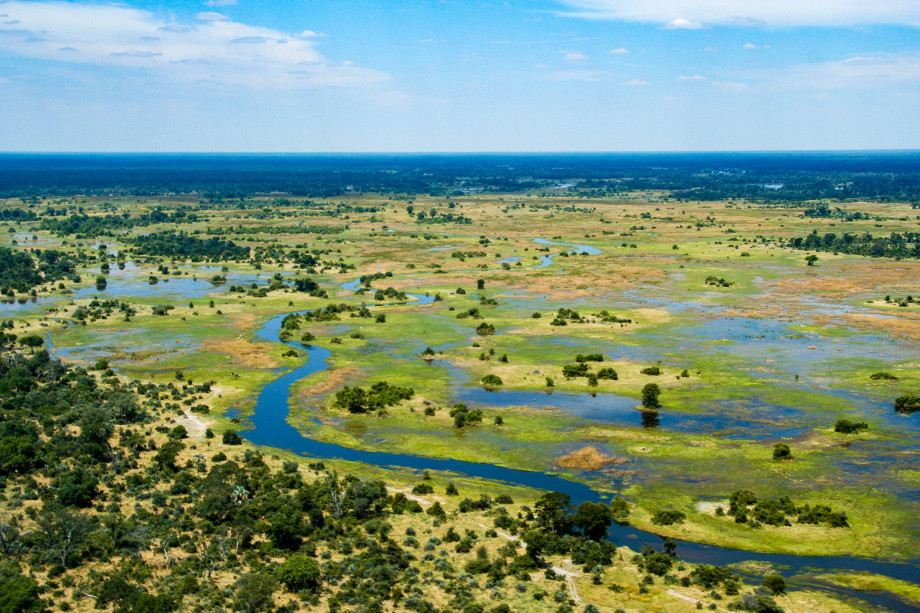THE CHALLENGE:
Where did modern humans first come from? Our development was determined by a combination of genetics, environment and climate, forces acting in concert over the millennia to lead us to where we are today. Those same forces now help us reconstruct the paths both physical and genetic that humans took as we migrated out of our original homeland. Led by Dr Vanessa Hayes from the Garvan Institute of Medical Research and the University of Sydney, and supported in part by supercomputer processing from the National Computational Infrastructure (NCI), an international research team has brought genomics and climate models together for an unprecedented investigation into the location of our human origins. Carried by their very first footsteps hundreds of thousands of years ago, human populations migrated and passed down genetic information to their descendants, leaving a trail of clues hinting at the homeland from which they had come.
THE SOLUTION:
Figuring out the homeland of modern humans took a combination of genomic data and climate data. These simultaneously guided the researchers’ understanding of the speed of genetic change and of the environmental factors affecting population migration. Together, these independent and wildly different datasets point to a single specific region of southern Africa: the Makgadikgadi–Okavango palaeo-wetlands, situated in present day Botswana, around 200,000 years ago. At the time a fertile and hospitable oasis in an otherwise dry and desolate desert, these wetlands represented home for the ancestors of modern humans.

This research team’s major accomplishment was bringing together entirely different disciplines of data on the way to reaching their conclusion. Robustly recreating ancient human lineages required genomic sequencing, and robustly recreating the environmental conditions that led to population migrations required regional-scale climate modelling. Carefully combining the two allowed the researchers to map out when and where the populations lived and moved.
The genomic data used was a form of DNA – mitochondrial DNA – that changes very little over the generations, thereby providing a link back to ancestral lineages. The researchers used new and existing sequence data from KhoeSan people, identified through their clicking language and forager lifestyle, as well as non-KhoeSan people who carry mitochondria from KhoeSan-like populations who once lived across the breadth of southern Africa. KhoeSan genomes are known to contain the deepest lineage of the human mitochondrial DNA tree, known as L0. Processed and analysed at NCI, the data showed that our earliest ancestors lived and thrived in the Makgadikgadi–Okavango palaeo-wetlands, a region which once contained the largest lake in Africa, for 70 thousand years. Mitochondrial divergence in the data then indicated an out-of-homeland migration event, first to the northeast and then to the southwest, from 130,000 to 110,000 years ago.
The climate data answered the question of why the early human populations left their wetland home. From around 200,000 to 130,000 years ago, the environmental conditions outside of the wetlands were not at all conducive to human life. The climate model shows an extended megadrought occurring over this time, making the wetlands a safe haven in the middle of a harsh environment. When the drought eventually broke, green corridors opened up, enabling northeast and southwest migrations that led to the spread of modern humans south to the tip of Africa and north to the rest of the continent and the world.
THE FUTURE:
Pinpointing the original homeland of modern humans is a major discovery, possible through the newly sequenced mitochondrial DNA from underrepresented African populations, and the multidisciplinary approach using climate and genomic data together. The plan for future investigations in this area is for whole human genomes to be used, giving more details about genetic changes over time and adding to the diversity of our global genomic datasets. A lot of genetic variation from Africa is missing from our existing family tree, and adding it in will give new insights into diseases and treatments. The genomic sequencing and processing, as well as the data handling, will require a supercomputer, especially as the amount and complexity of the data grows. Once sequenced, the data can be analysed in many different ways: to look at human evolution, migration and development, to look at rare diseases or to investigate possible new medical treatments. And now, we have a sense of where it all began.
You can read the entire paper outlining the research here: https://www.nature.com/articles/s41586-019-1714-1